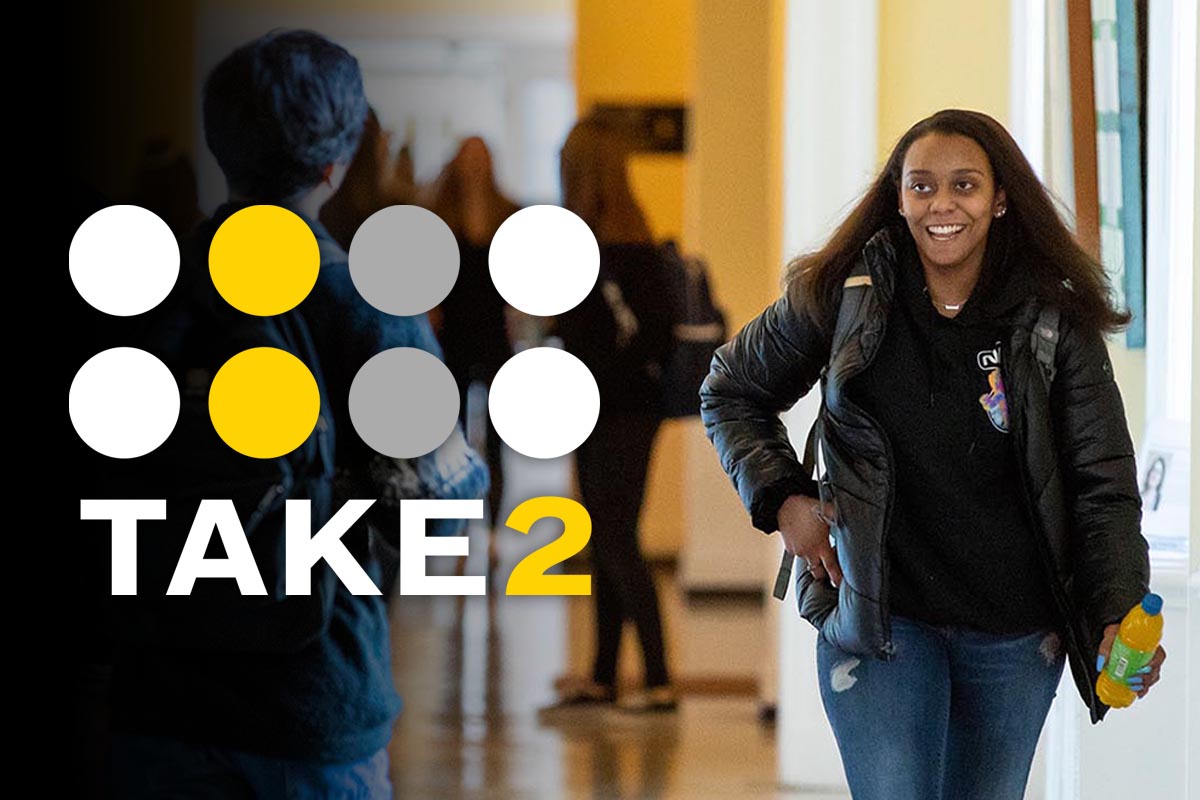New robotics lab emphasizes collaboration and engagement
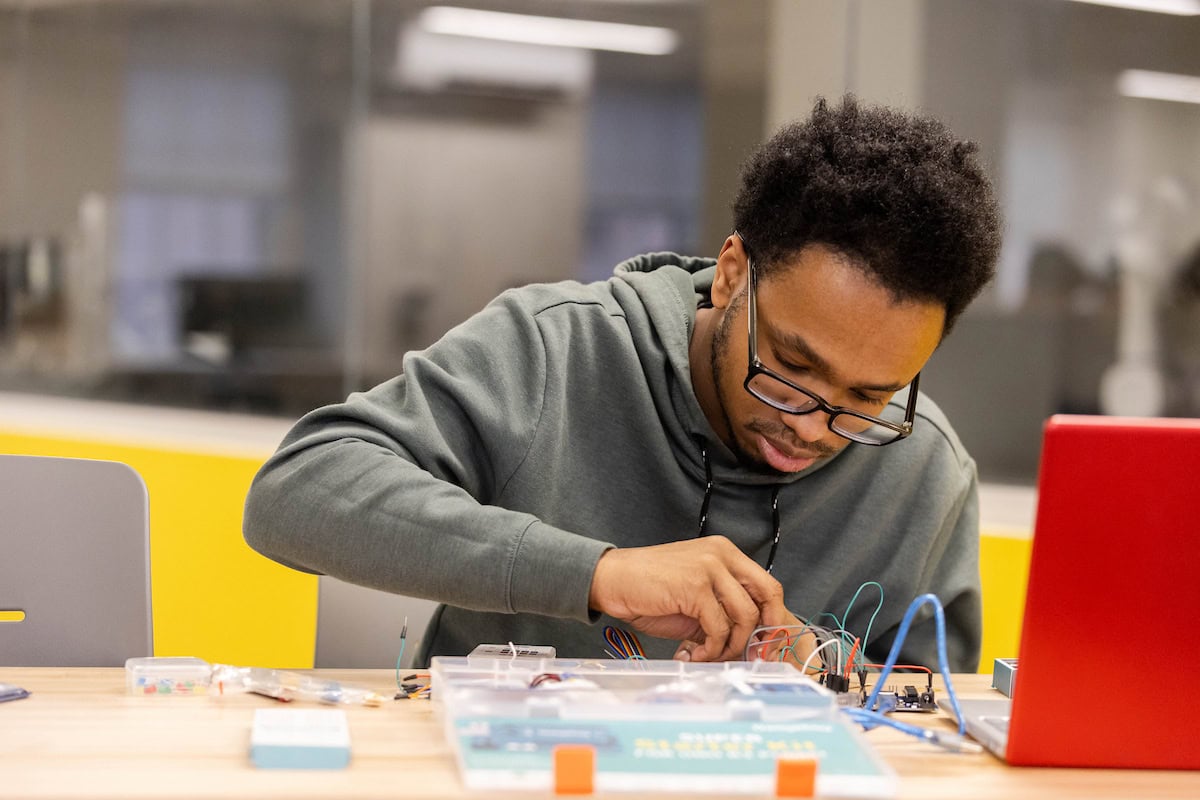
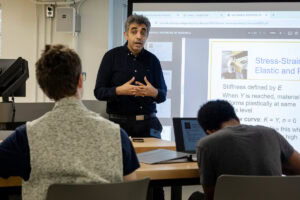
Professor Siavash Sattar teaches a class in Randolph’s new robotics lab, located in Presser Hall.
A good engineering lab fosters creativity, collaboration, and hands-on learning while also providing students access to the tools and technology necessary to solve real-world problems.
The first floor of Presser Hall has become that place for Randolph’s new robotics and mechatronics engineering program.
The College renovated the space in Presser specifically for the major, and students began using it this fall. Improvements include a machine shop, teaching lab, faculty research lab, and offices.
“It emphasizes functionality and engagement,” said Siavash Sattar, a new robotics and mechatronics engineering professor.
“We’re creating a space where students will not only work on projects but also experience how engineering comes to life, from prototype to final design.”
An interdisciplinary branch of engineering, mechatronics involves mechanical, electrical, and computer engineering. Robotics is a subset of that, focusing on applied systems to design, build, and operate smart machines.
The program received funding from GO Virginia, a state-funded, competitive initiative administered by the Virginia Department of Housing and Community Development that strengthens and diversifies Virginia’s economy and fosters the creation of higher-wage jobs in strategic industries.
“While manufacturing and robotics are big everywhere, Lynchburg is a particular hotbed for that kind of engineering,” said Peter Sheldon, Randolph’s Charles A. Dana Professor and chair of the physics and engineering departments, who proposed bringing the major to the College.
“We are well-situated with a lot of engineering companies and others in the industry, which is one of the reasons why we chose this,” he added.
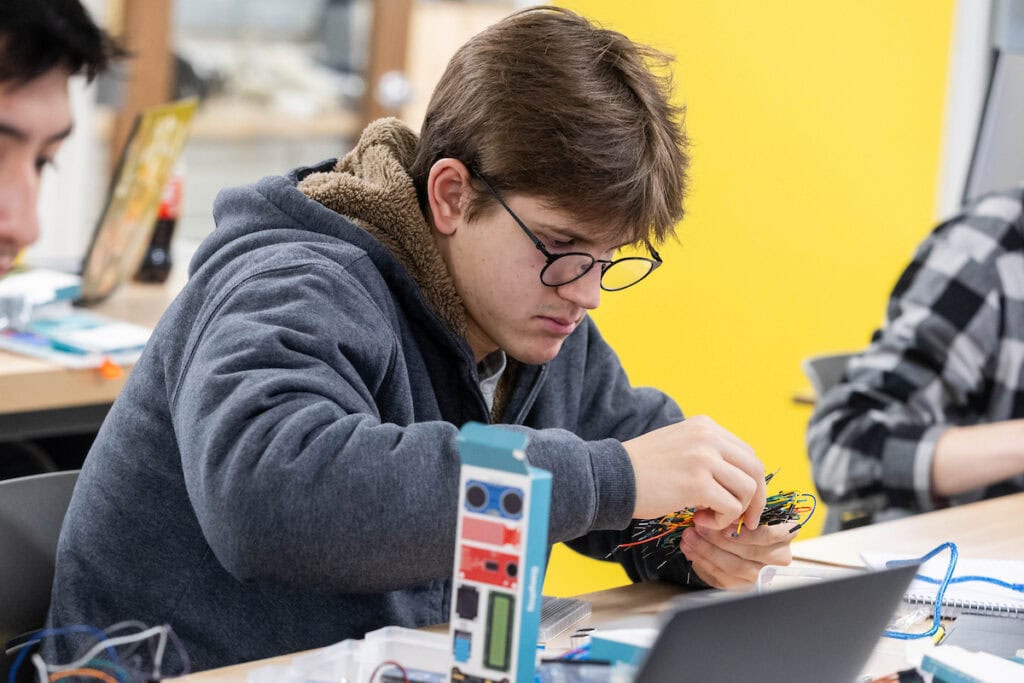
GO Virginia was established in 2016 by the General Assembly, which initially awarded funds to nine different regional councils to develop growth and diversification plans to assess their economic landscapes, gaps in the workforce, and opportunities for collaboration.
Randolph is in Region 2, which includes the cities of Covington, Lynchburg, Radford, Roanoke, and Salem and the counties of Alleghany, Amherst, Appomattox, Bedford, Botetourt, Campbell, Craig, Floyd, Franklin, Giles, Montgomery, Pulaski, and Roanoke.
The $340,000 in GO Virginia grant money was used to purchase mechatronics and robotics lab equipment necessary for industry training and primary certifications, with matching funds used for faculty and staff, additional equipment, community engagement and outreach, and recruiting prospective students into the program. A ribbon cutting for the lab was held in November as part of Go Virginia’s Celebrate Success event for Region 2.
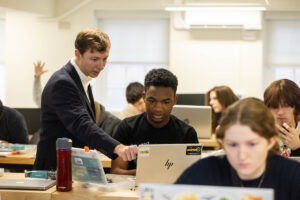
Professor Jonathan Skelton stops to talk with a student during class in the robotics lab.
“Nowhere else on campus screams ‘engineering’ quite like the new first floor of Presser,” said Gregory Wietrzykowski ’26, a chemistry major who plans to study materials science in grad school. “It’s become a great place for me to get work done—and one of my favorite spaces on campus.“
“The shop has a big window that can be written on with dry-erase markers, which makes the space feel really open without infringing on the lab/lecture hall right outside,” he said. “The whole floor is arranged in a way that seems to encourage group collaboration and project productivity.”
The program is planning to launch as a FANUC robotics-certified program. This certification is designed to prepare students with core competencies and automation technology skills for today’s manufacturing industry.
“Dr. Sheldon has designed a program that began with engagement with the local workforce,” said Gary Dop, Randolph’s dean of innovation. “For years, he has cultivated relationships with local schools, employers, and professionals, so the design of this program naturally began with a desire to help meet the needs of our local industries and engineering firms.
“This program grew out of that collaboration,” he added, “identifying how Randolph can meet the need for a talent pipeline that starts in local high schools and ends with employment in our region.”
Tags: engineering, Giving News, Grant & Research News, mechanical engineering, physics, robotics, robotics and mechatronics, robotics and mechatronics engineering, science, Science Matters, STEM, Vita Fall 2024